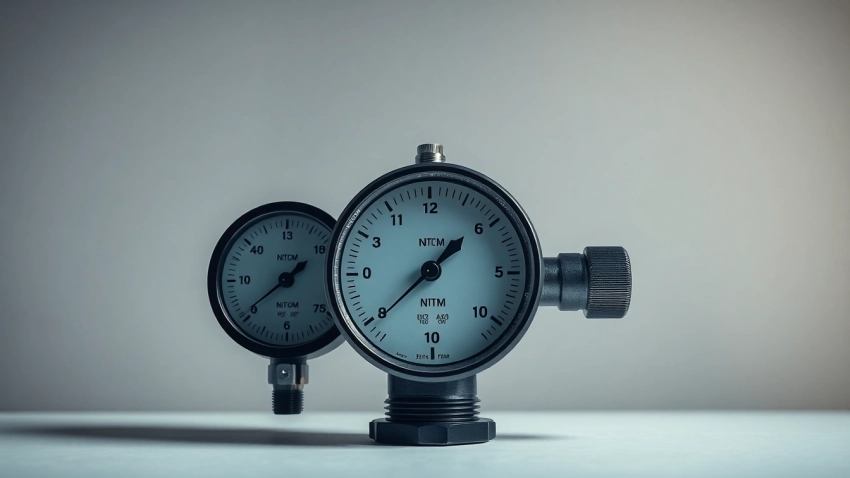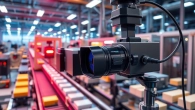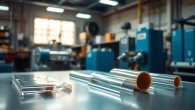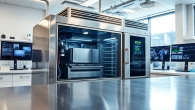
Essential Nitrogen Regulator Insights for Optimal Performance in Industrial Applications
Understanding Nitrogen Regulators
Nitrogen regulators are critical components utilized across various industries to control the flow of nitrogen gas. They are essential in applications ranging from HVAC systems to brewing, and their proper functionality ensures efficiency and safety in gas delivery systems. A well-designed nitrogen regulator allows users to maintain precise pressure levels, essential for effective operations.
What is a Nitrogen Regulator?
A nitrogen regulator is a type of pressure-reducing valve that controls the outlet pressure of nitrogen gas from a high-pressure cylinder to a lower, usable pressure for various applications. These regulators are crucial for managing the pressure that is exerted in different systems, ensuring that nitrogen flows at safe levels. They are designed to handle the specific characteristics of nitrogen, a non-combustible gas that is often used in pressurizing and purging applications.
How Nitrogen Regulators Work
Nitrogen regulators work by reducing the pressure of the nitrogen gas and ensuring a constant and controlled output pressure. The basic operation involves a diaphragm that responds to the changes in outlet pressure. When the outlet pressure falls below a set level, the diaphragm moves, which then opens the valve to allow more gas to flow from the cylinder. Conversely, when the outlet pressure rises above the preset level, the diaphragm closes the valve slightly, reducing the flow. This process continues automatically, maintaining a stable outlet pressure that is essential for system operations.
Key Features of Quality Regulators
- Pressure Range: Quality regulators offer a specific range for outlet pressure adjustment, typically allowing users to fine-tune the pressure according to their needs.
- Durability: Materials used in the construction, such as brass or stainless steel, are fundamental in ensuring that the regulator withstands high pressures and is resistant to corrosion.
- Safety Features: Excellent nitrogen regulators come equipped with safety features, including pressure relief valves and gauges to monitor performance and ensure safe operation.
- Flow Rate: A reliable regulator should provide a sufficient flow rate that meets the demands of the application, ensuring efficiency in operations.
Types of Nitrogen Regulators
Different types of nitrogen regulators exist to cater to various industrial needs. Understanding these categories can help users choose the most suitable option based on their specific application.
Standard Models vs. Specialty Models
Standard nitrogen regulators are usually designed for general use and are suitable for many applications, including industrial, medical, and automotive fields. Specialty models, on the other hand, are tailored for more specific applications, such as those requiring ultra-high purity or those designed for specific tasks like brewing or HVAC. Users must assess their application requirements carefully to select the appropriate model.
Adjustable vs. Preset Regulators
Adjustable nitrogen regulators allow users to set their desired pressure based on their operational needs. This feature provides flexibility and is especially beneficial in applications with varying pressure requirements. In contrast, preset regulators come with a fixed output pressure, which can be advantageous in applications where consistency is critical, such as in laboratories or medical settings.
Dual Outlet Nitrogen Regulators
Dual outlet nitrogen regulators feature two separate outlets for nitrogen gas, allowing users to simultaneously supply nitrogen to multiple devices or systems. This design enhances efficiency, especially in industrial settings where multiple operations might need nitrogen at the same time. Users should ensure that the regulator can handle the required flow rate and pressure for both outlets effectively.
Applications of Nitrogen Regulators
Nitrogen regulators have a wide range of applications across various industries, enhancing operational efficiency and safety. Here are some notable applications:
Nitrogen Regulators in HVAC Systems
In HVAC systems, nitrogen is often used for pressure testing and purging lines. Regulators play a vital role in ensuring that nitrogen is delivered at the correct pressure to facilitate these processes safely. For instance, when setting up or maintaining a refrigeration unit, technicians utilize nitrogen to identify leaks in the system. The regulator ensures a steady and controlled pressure during the testing process to achieve accurate results.
Industrial Uses for Nitrogen Regulators
Industrially, nitrogen serves multiple functions, including blanketing, pressurizing, and purging. In chemical manufacturing, nitrogen is frequently employed to prevent oxidation during sensitive processes, and regulators ensure it is delivered at optimal pressures to achieve desired outcomes. In welding, nitrogen can assist in shielding the weld area, thus reducing contaminations and ensuring quality.
Nitrogen Regulators in Brewing Applications
In the brewing industry, nitrogen regulators are crucial for delivering nitrogen gas to enhance the quality and texture of beers, especially stouts, and porters. These regulators help maintain the CO2 to nitrogen ratio, creating a desired creamy texture. Brewing setups often require precise pressure settings, making adjustable regulators favorable for brewers aiming to perfect their beverages.
Choosing the Right Nitrogen Regulator
Selecting the appropriate nitrogen regulator involves several considerations that align with application requirements and user preferences. Here’s a detailed guide.
Factors to Consider When Buying
- Application Requirements: Evaluate what specific functions the nitrogen regulator must fulfill, such as the required pressure range and flow rates.
- Material and Construction: Consider the durability of the materials. For example, stainless steel regulators may be more suitable in corrosive environments.
- Safety Features: Look for regulators with built-in safety mechanisms, such as gauges and pressure relief valves, to ensure safe operation.
- Brand and Reputation: Research brands and read reviews to determine the quality and reliability of the regulator.
Top Brands for Nitrogen Regulators
Several reputable brands manufacture high-quality nitrogen regulators. Notable names include:
- Uniweld: Known for reliability and durability in their nitrogen gas products.
- WT Farley: Offers a range of preset and adjustable nitrogen regulators appealing to both amateur and professional users.
- Victor: Well-respected for their industrial-grade regulators used in welding and other applications.
- McMaster-Carr: Provides a vast selection with many options, catering to diverse industrial requirements.
Comparing Prices and Performance
Prices for nitrogen regulators can vary significantly based on features, brand, and specifications. It’s essential to compare the performance capabilities of different models against their price points. While lower-priced options might be appealing, they may lack important features such as high flow rates, accuracy, or safety mechanisms. Investing in a reputable and well-reviewed product may save costs in the long run by preventing failures and ensuring reliable performance.
Best Practices for Using Nitrogen Regulators
To maximize the efficiency and safety of nitrogen regulators, users should apply best practices in installation, operation, and maintenance. Here are some key guidelines:
Installation Tips for First-Time Users
- Read Manufacturer Guidelines: Always refer to the manufacturer’s instructions to ensure correct installation.
- Check Connections: Ensure that all connections are secure to avoid gas leaks that could pose safety hazards.
- Test for Leaks: Before using the regulator, conduct a leak test using a soap solution to find potential leak points.
- Use Proper Tools: Employ the appropriate tools to avoid damaging the regulator during installation.
Safety Measures When Handling Nitrogen
Safety is paramount when working with nitrogen. Ensure that:
- Personal Protective Equipment (PPE) is worn, including gloves and safety goggles, to protect against accidental exposure.
- Ventilation is adequate in the work area to avoid asphyxiation risks since nitrogen is an inert gas that can displace oxygen.
- Regular Maintenance is carried out, including inspection for wear and tear on the regulator components to ensure ongoing safe operation.
Maintenance for Longevity and Efficiency
Proper maintenance of nitrogen regulators significantly extends their service life and ensures optimal performance. Regularly check for:
- Damage or Wear: Inspect for signs of wear on seals, gauges, and other components that could affect performance.
- Calibration: Periodically calibrate the regulator to maintain accuracy in pressure delivery.
- Cleaning: Clean the regulator as per manufacturer instructions to avoid buildup that may hinder performance.
Conclusion
Nitrogen regulators are essential tools across various fields, enabling precise control of nitrogen gas for numerous applications. Understanding the different types of regulators, along with their specific features, can greatly enhance operational efficiency while improving safety standards. By following best practices in selection, installation, and maintenance, users can ensure that their nitrogen regulators perform optimally, thereby meeting the demands of their applications for years to come.












Leave a Reply